THE LOUVRE MUSEUM HEIST
AND 8 JEWELLERY ROBBERIES THAT SHOOK THE WORLD.
Whilst everyone’s talking about the theft of priceless* royal jewels from the Louvre Museum in Paris - which was, admittedly, very impressive and also opened up some valuable discussion around jewels and gems and European colonial ‘acquisitions’ - we thought we’d explore a few other notable jewellery robberies from years gone by…
*per CNN: priceless happens to be, in this case, around $102 million
My personal favourite has to be the Baker Street Robbery (literally inspired by the Sherlock Holmes case The Red-Headed League), but also expect to read about the 1881 Hatton Garden Post Office Robbery, the Great Pearl Robbery of 1913, the theft of Napoleon's wife's ridiculous diamond necklace, and a 007: The World Is Not Enough style Millennium Dome heist (that was even set to feature a James Bond-calibre speedboat getaway).
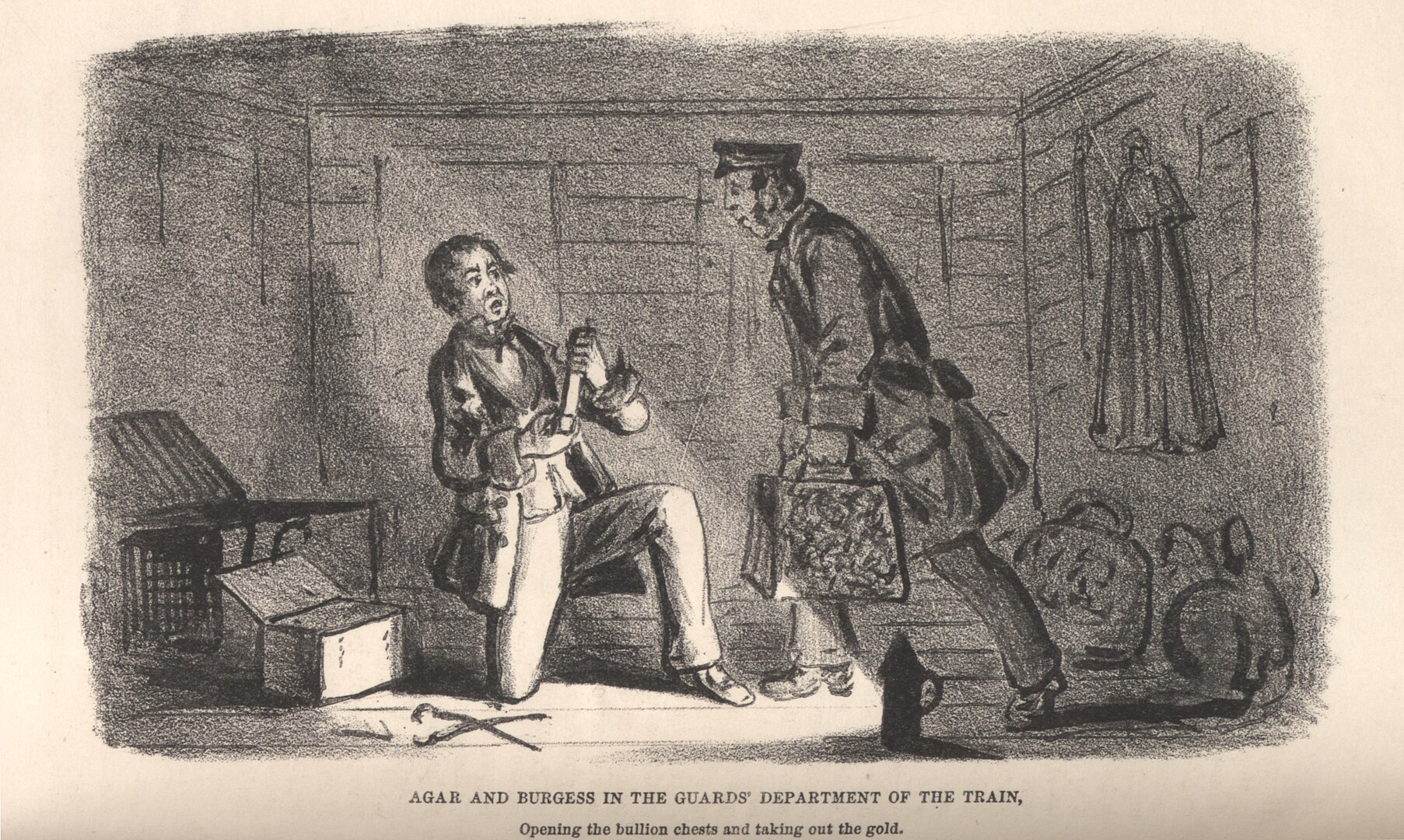
In chronological order, then:
1855 Great Gold Robbery
Stolen: three boxes of gold bullion and coins
Value: £1.97 million in today’s money
Status: Solved with convictions. Goods never recovered
On 15th May 1855, one of the most notable train robberies in British history took place when a routine shipment of three boxes of gold bullion and coins were stolen from the guard’s van of a South Eastern Railway (SER) service travelling from London Bridge to Folkestone. The shipment was on its way to Paris, but by the time it arrived, the safes were empty. The crime was carefully planned by Edward Agar, a career criminal, and William Pierce, a former SER employee who had been dismissed for gambling. After his dismissal, Pierce continued to frequent pubs around London Bridge, where he picked up information about the methods and schedules of gold shipments from railway workers. Realising that a theft would only be possible with copies of keys to the safe, access to staff rotas, and insider cooperation, he and Agar recruited William Tester and James Burgess, two employees of the SER, to their scheme.
The men took wax impressions of the safe keys and made their own copies. When they knew a shipment was taking place, Tester ensured Burgess was on guard duty to ensure no suspicion was raised, and Agar hid in the guard’s van. During the journey, the pair emptied the safes of 224 pounds (102kg) of gold, valued at the time at £12,000 and equivalent to approximately £1,970,000 today! They left the train at Dover and the theft went unnoticed until the shipment reached Paris, leaving the authorities clueless as to where along the route the robbery had taken place, and by whom. The truth was only revealed later when, after being arrested for fraud, Agar asked Pierce to help support his former partner, Fanny Kay, and child. When Pierce failed to do so, Kay informed the authorities of who had carried out the theft, leading to an investigation that uncovered evidence of melted gold at Cambridge Villa. Agar confessed and turned witness, resulting in the arrest and conviction of his fellow robbers.
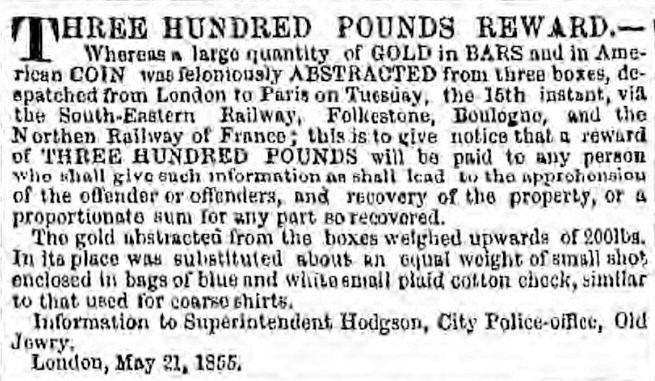
1881 Hatton Garden Post Office Robbery
Stolen: 40 letters containing precious stones and jewellery
Value: £10.2 million
Status: Solved. Goods never recovered
In November 1881, the Hatton Garden Branch Post Office, situated in the busy district of Holborn, became the scene of a bold and meticulous robbery. At around 17.00, when the work in the Post Office was at its height, the lights suddenly went out and the building was plunged into near-total darkness. Panic broke out among the female clerks and young boys in the offices and warehouses, adding to the chaos and confusion on both sides of the counter. It wasn’t long before they discovered that the tap of the gas meter supplying the office lamps had been turned off. Once the gas lamps were relit, a mailbag of forty registered letters was noticed to be missing. The stolen letters were valued at £80,000 - more than £10 million today - and contained an extraordinary amount of precious stones and jewellery, including pearls, diamonds, emeralds, sapphires, garnets, and rubies.
It was believed that two or more suspects had carried out the heist, with one slipping into the basement to turn off the gas supply, and another taking advantage of the chaos to steal the bag. Despite the £1,200 reward offered from the Postmaster General and insurance companies, the crime and a number of conflicting leads baffled both the Metropolitan police and the Post Office Investigation Branch for over a decade. It wasn’t until 1893 that the mystery was solved, when Adam Worth, a master criminal later thought to have inspired Arthur Conan Doyle’s creation of Professor Moriarty, confessed to the crime while being held in a Belgian prison.
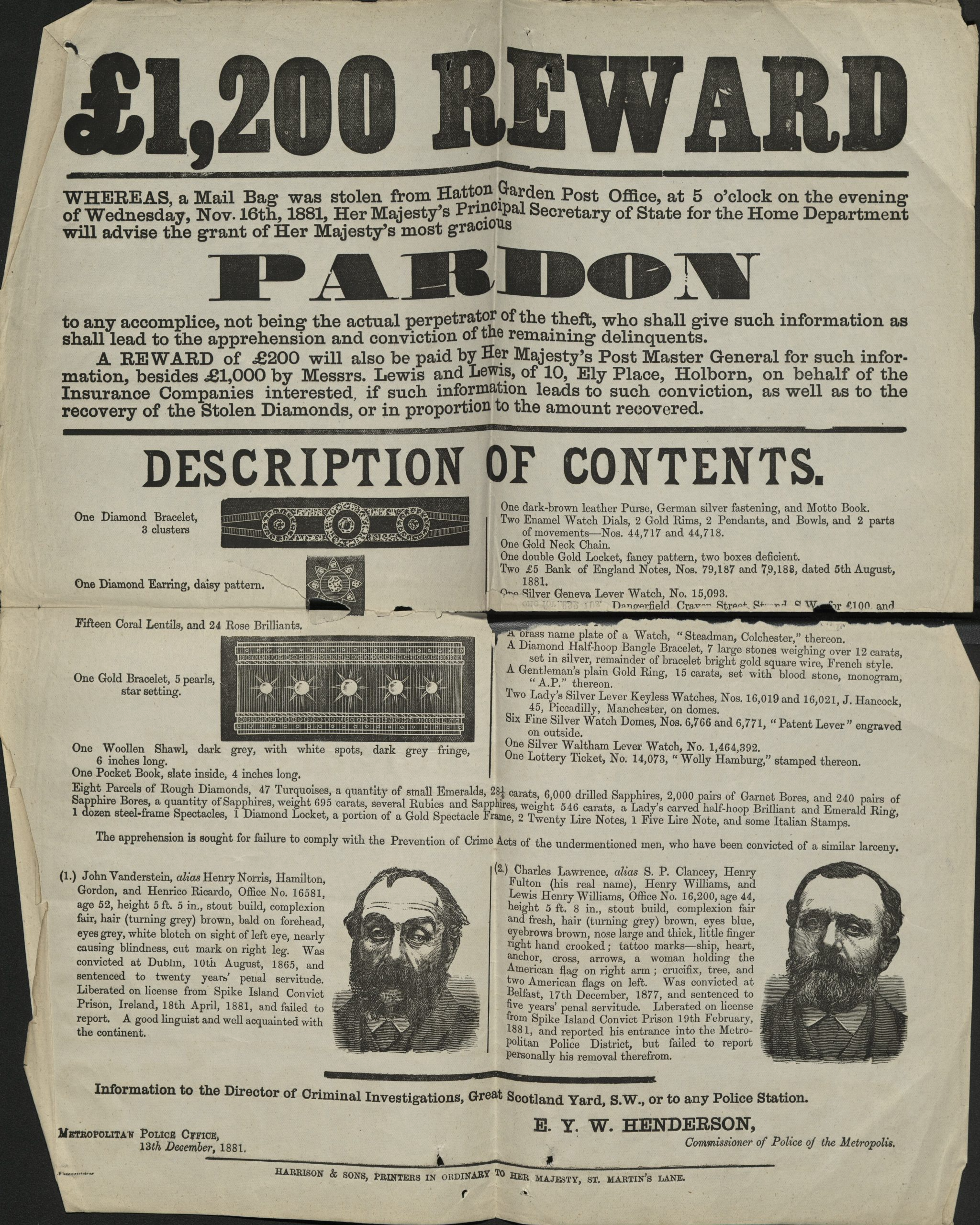
The Great Pearl Robbery of 1913
Stolen: String of 61 flawless blue-pink pearls
Value: £18.6 million
Status: Solved. Goods recovered (almost)
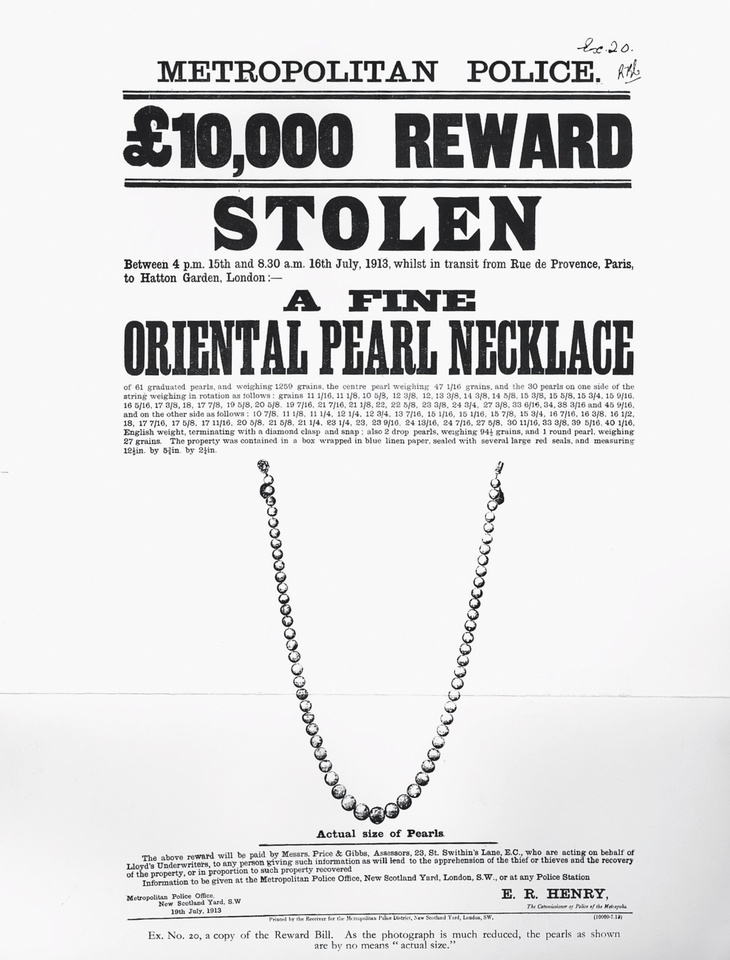
The Great Pearl Robbery took place in 1913 and centred on a necklace known as the ‘Mona Lisa of pearls’ - a string of 61 flawless blue-pink pearls with a diamond clasp, regarded at the time as the most valuable necklace in the world, and worth more than the Hope Diamond. Owned by jeweller Max Mayer, the necklace had taken over a decade to create, with its centrepiece pearl once belonging to the royal family of Portugal. The theft was planned by Joseph “Cammi” Grizzard, a well-known jewel fence, who, with accomplices Simon Silverman and James Lockett, devised an intricate plan to intercept the necklace as it was being returned by post. Silverman rented an office near Mayer’s in Hatton Garden, studied the route and habits of the postman, W.E.Neville, and even produced imitation seals in the style of Mayer’s.
On 16th July, after bribing the postman with £400, Neville delivered the necklace meant for Mayer to Silverman’s office, where the gang replaced the pearls with sugar lumps, resealed the package using the duplicate seals and returned it to the post. Mayer discovered the theft upon opening the parcel. The thieves were eventually caught in a sting operation in which Samuel Brandstatter and Myer Cohen Quadratstein posed as prospective buyers; however, after growing suspicious, the gang did not have the pearls on them. Two weeks later, a piano-back maker named Augustus Horne found a box containing the discarded pearls in a Higbury gutter. Believing them to be fakes, he even gave one to a child to play with before turning the rest over to police—bringing a remarkable end to one of London’s most extraordinary jewel thefts.
Napoleon Diamond Necklace Theft (1930)
Stolen: Diamond necklace commissioned by Napoleon I of France c.1811-1812
Value: £15 million
Status: Solved
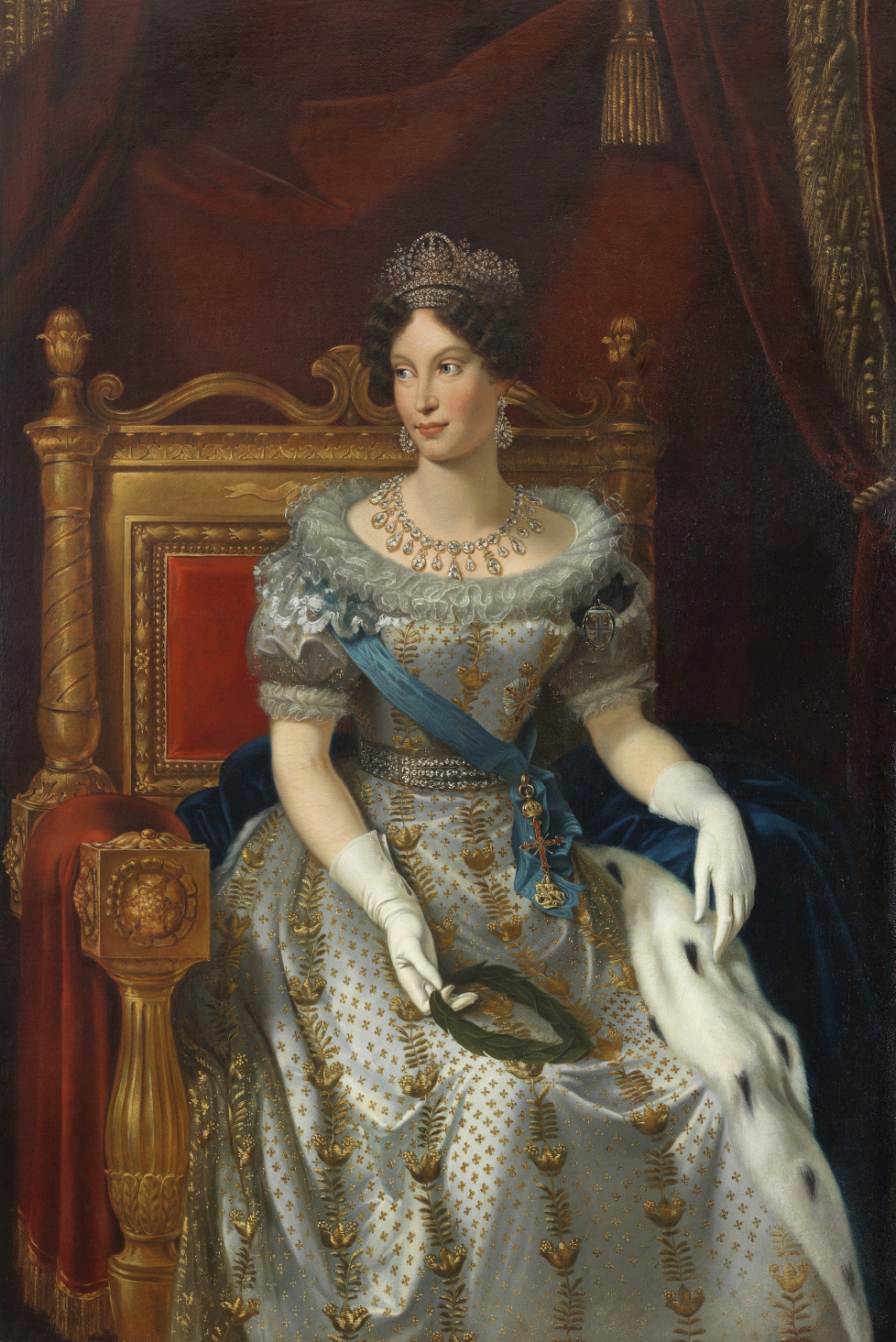
Okay, this is a wild one. In 1810, Napoleon divorced his wife, the Empress Joséphine, because he was unable to produce an heir by her. Naturally, he quickly remarried two months later to Marie-Louise of Austria who bore a son, Napoleon II. N-Senior was delighted, so commissioned two parures to reward her... fertility... and the Napoleon Diamond Necklace.
Come 1929, at the start of the Great Depression, the necklace had passed down to Maria Theresa of Portugal who was in need of cash. She made several unsuccessful attempts to sell it before enlisting the help of of "Colonel Townsend" of "the British Secret Service" and "Princess Gerves Baronti, daughter of Prince Baronti" of "Italy" who promised to sell the necklace on commission in the United States, promising it would fetch at least $450,000 USD.
What actually happened, then? The two impostors flogged the necklace to David Michel for $60,000. They then claimed "expenses" of $52,730, returning a mere $7,270 of the promised half-a-million back to Maria Theresa.
"When informed of the sale, Maria Theresa gave power of attorney to her friend Anna Eisenmenger, wife of Victor Eisenmenger, and enlisted her help in retrieving her property. Eisenmenger approached Michel, who eventually agreed to return the necklace for $50,000, taking a personal loss of $10,000 from the sale. She also sought legal redress on Maria Theresa's behalf. Soon after, Thomas C. T. Crain, the New York County District Attorney announced that the Townsends were sought on counts of grand larceny. The scandal reached the New York Times on March 1, 1930, along with initial reports that the Townsends had removed several stones from the necklace to sell separately. These turned out to be false, but the pair fled the country and were never caught. "Princess Baronti" wrote in her self-published 1935 autobiography that the two of them passed through Chicago and then to England before separating, with Townsend planning to move to Japan and Baronti herself travelling to India until the scandal passed.
"After resolving the incident, Maria Theresa held the necklace until her death in 1944. Four years later, the Habsburg family sold it to the French industrialist Paul-Louis Weiller. In 1960, Weiller sold the Napoleon Diamond Necklace to Harry Winston, who believed that the historical value of the piece would make it more valuable than if the stones were removed and resold individually, as was common practice at the time. As such, he kept it intact, reselling it the same year to Marjorie Merriweather Post. Post donated the necklace to the Smithsonian Institution in 1962, and it has since remained on display at the National Museum of Natural History in Washington, D.C., United States. The donation also included the original leather case for the necklace, commissioned by Napoleon in the empress's official colours (green and gold) and inscribed with her initials." - Source: wikipedia.org
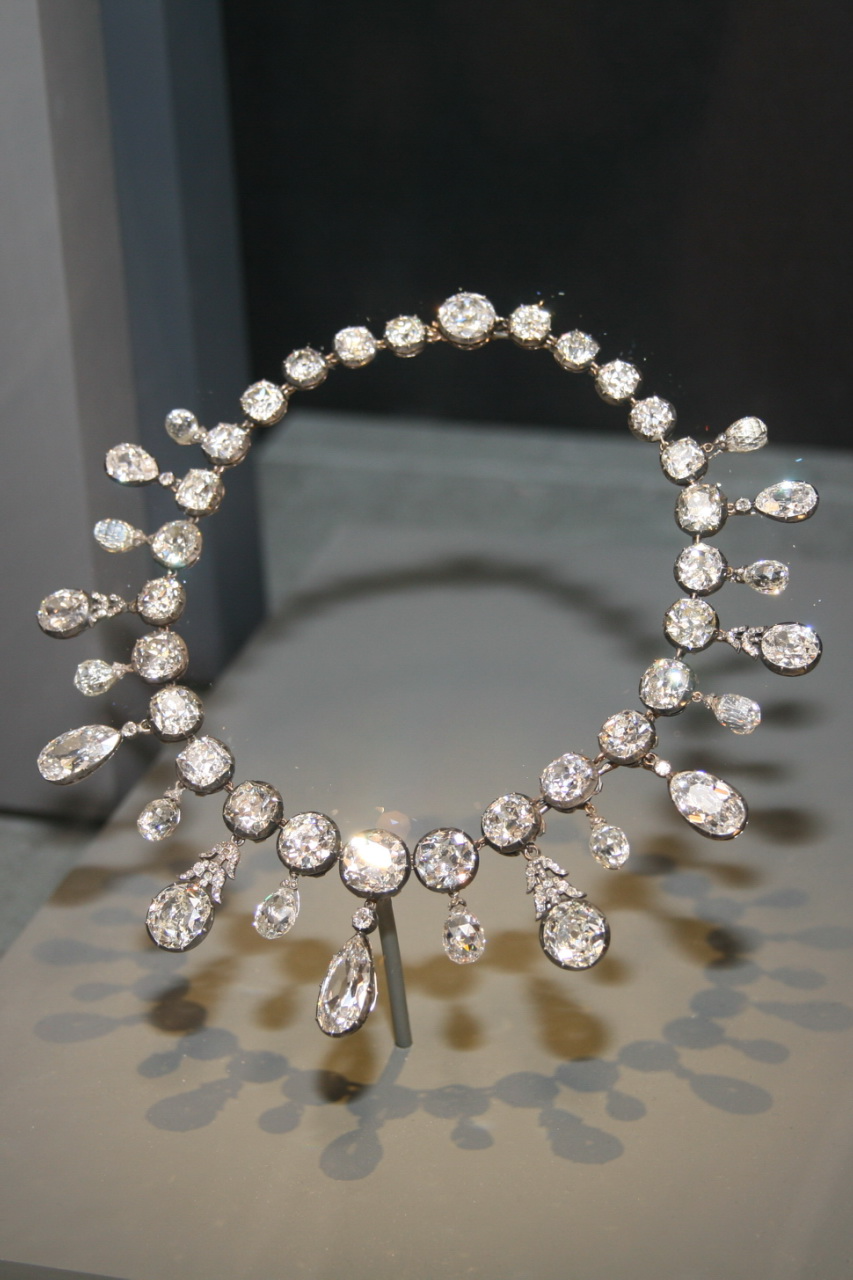
1935 Croydon Aerodrome Robbery
Stolen: Gold bullion, gold sovereigns and American Eagles
Value: £1.84 million
Status: Unsolved
During the interwar years, Croydon Aerodrome was London’s main airport, with large amounts of cargo, mail, and gold passing through en route to and from other parts of the world. The robbery took place on 6th March 1935 and involved the disappearance of £21,000 worth of gold bullion, gold sovereigns, and American Eagles - equivalent to about £1.9 million today. As was customary at the aerodrome, only one security guard was on duty. While he left the terminal to receive an early-mrong flight from Germany, a gang entered the strong room using duplicate keys and escaped with three boxes of gold destined for Paris and Belgium. The theft went unnoticed until a few hours later when the strong room was found unlocked and empty. Three men, including Cecil Swanland, were charged with theft, however the case collapsed when a witness changed his testimony which meant Swanland alone was convicted and sentenced to seven years in prison. Despite the investigation, the fate of the stolen gold and the identities of those involved remain a mystery to this day.
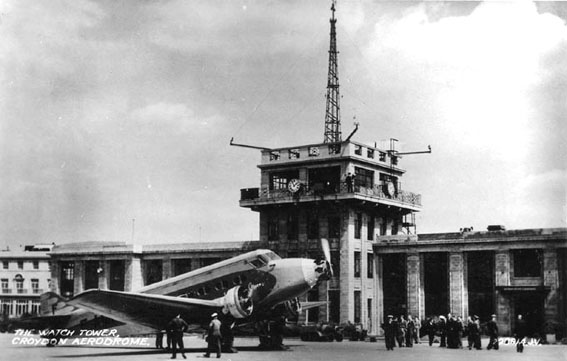
The Baker Street Robbery (1971)
Stolen: Contents of 286 safe deposit boxes
Value: £53.5 million
Status: Partially solved
The Baker Street robbery, carried out on the night of 11th September 1971, was the burglary on safety deposit boxes at the Baker Street branch of Lloyds Bank in London. A gang, led by career criminal Anthony Gavin tunnelled 40 feet from a rented leather goods shop, Le Sac, two doors away to come up through the floor of the vault. Inspired by the Sherlock Holmes story The Red-Headed League, Gavin and his colleagues spent weekends tunnelling into the bank where they emptied 268 safety deposit boxes. The total value of the stolen property is unknown but was estimated at between £1.25 million and £3 million, though only £231,000 was ever recovered by the police. The burglars used walkie-talkies to communicate with a lookout stationed on a nearby rooftop, but their transmissions were accidentally intercepted by amateur radio enthusiast Robert Rowlands, who alerted the police.
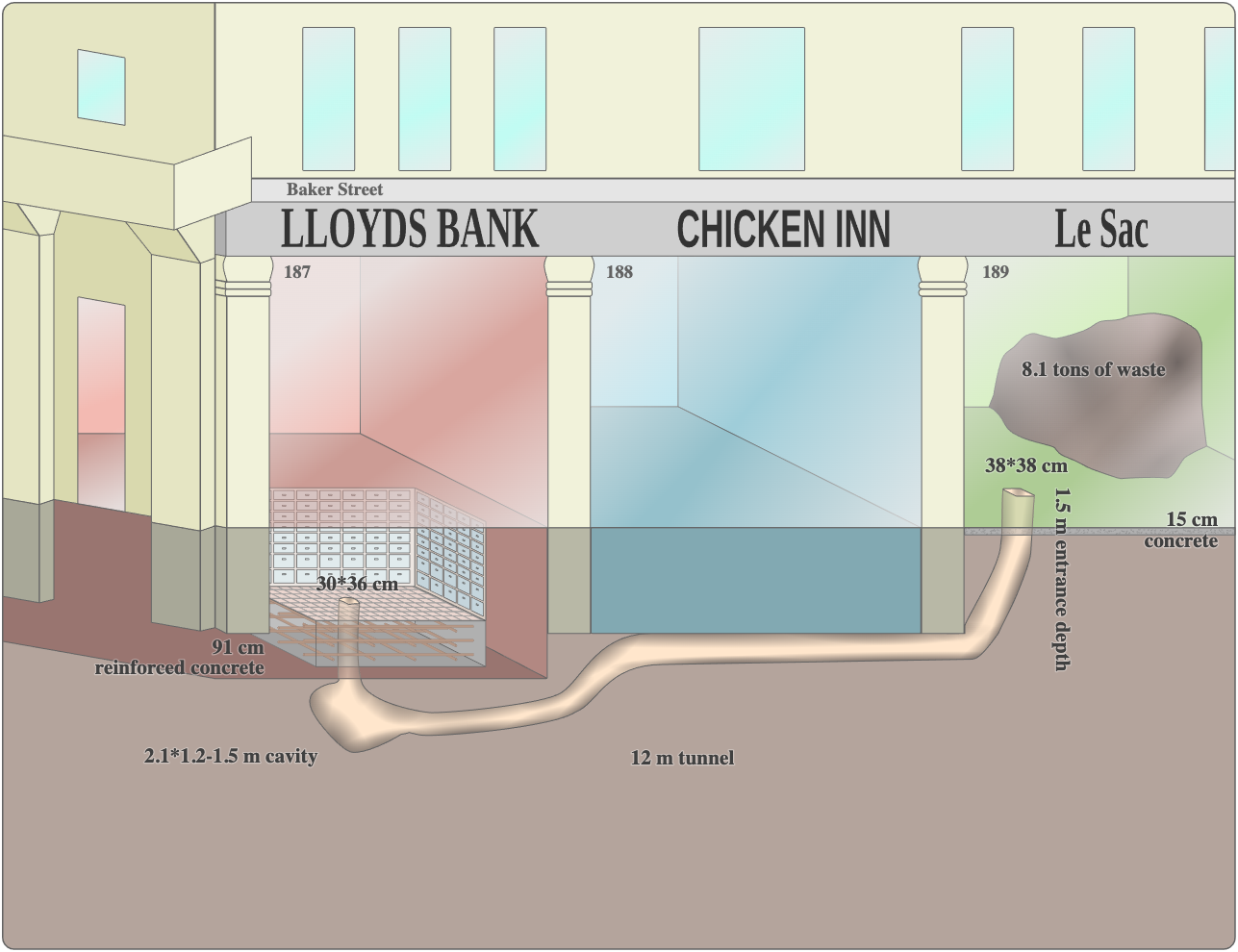
Despite officers searching 750 banks within an eight-mile radius, the gang escaped undetected that night. However, police soon traced the culprits after discovering that Benjamin Wolfe, one of the robbers, had foolishly signed the lease for the shop in his own name. Wolfe, Gavin, and the rest of the gang were all arrested and later sentenced to lengthy prison terms, though other suspected members were never caught. The case became legendary not only for the ingenuity of the crime but also for the rumours surrounding it—claims that one of the vault’s boxes contained compromising photographs of Princess Margaret, and another held evidence involving a government minister.
The Marlborough Diamond Robbery (1980)
Stolen: The Marlborough Diamond
Value: £8.1 million
Status: Solved. Goods never recovered
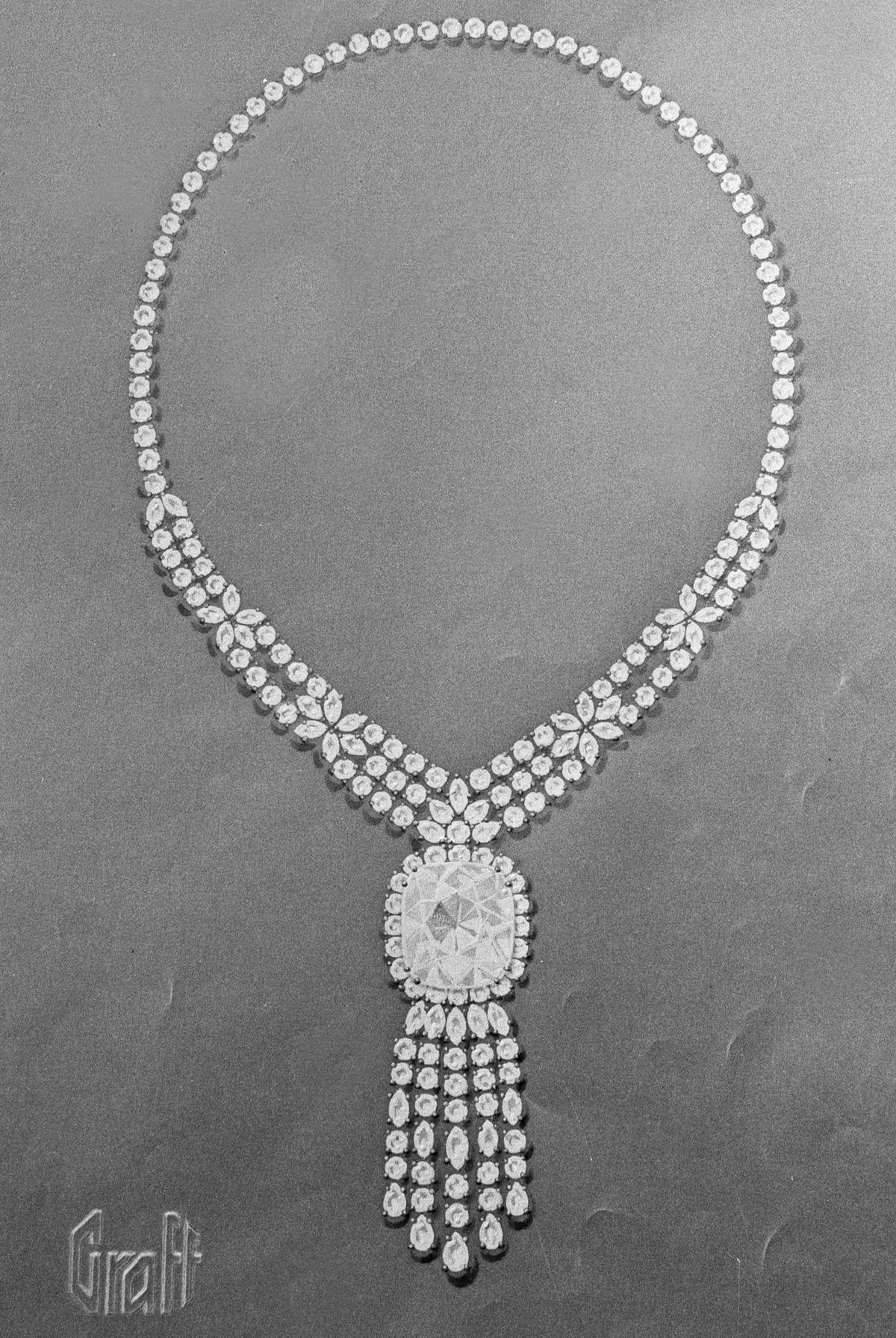
The Marlborough Diamond robbery was carried out by, Chicago mobster and high-ranking member of the Chicago Outfit criminal organisation, Joseph “Jerry” Scalise and his colleague Arthur Rachel. Carried out on 11th September 1980, the pair undertook a $3.6 million jewel robbery in broad daylight at Graff’s jewellery store in London’s luxury district of Knightsbridge, escaping in under a minute with the 45-carat Marlborough Diamond along with many other jewels. However, their carelessness allowed the authorities to quickly identify the perpetrators, as Rachel had rented the getaway car in his own name, and Scalise’s badly deformed left hand helped him to be recognised almost immediately. The pair were arrested as they exited their flight home at Chicago’s O’Hare International Airport and, after spending nearly three years in U.S. federal custody resisting extradition, Scalise and Rachel were handed over to British authorities in 1983. The following year, both men were convicted and Scalise was sentenced to 16 years in prison on the Isle of Wight. Despite their convictions, the Marlborough Diamond was never recovered and its fate remains one of the enduring mysteries of modern jewel heists.
Millenium Dome Raid (2000)
Stolen: Nothing
Value: None
Status: Fail
The best jewellery heist that never was... An attempted robbery of London's Millennium Dome exhibition occurring on 7th November 2000, when a local gang tried to steal diamonds from the De Beers exhibition that included many jewels including the Millennium Star, a flawless 203.04-carat rock with an estimated value of over £425 million. The thieves, who had planned to escape via speedboat (yes, remember that Bond movie??), were foiled by the Flying Squad of the Motropolitan police who, acting off a tip-off from Kent Police's Serious Crime Unit, threw 200 officers at the operation on the day of the raid. The story is remarkable, per wikipedia.org:
"On 7 November at 9:30 am, Operation Magician was underway, commanded by Detective Superintendent Jon Shatford of the Metropolitan Police. A total of two hundred officers were involved in the operation, of which forty were from the Specialist Firearms Command (SCO19). A further sixty armed Flying Squad officers were stationed around the Thames and twenty on the river to prevent escape attempts. Surveillance officers were disguised as Dome employees. The police used the Millennium Dome's CCTV room as a control room.
"All the officers were briefed at 3 am, the day of the raid, on the contingency plans in place. Before the raid, some officers were positioned behind a dummy wall, and others were dressed as cleaners and Dome employees, with their firearms concealed. Before the raid, four members of the gang had been identified in a JCB earth digger, and all were wearing body armour and gas masks. The men were armed with smoke bombs, sledgehammers, and nail guns to be used to penetrate the security glass that was protecting the exhibit. The digger was used by the gang to break through the perimeter fence and to crash through the side wall of the Dome to reach the Money Zone, where the De Beers diamonds were kept. The digger entered the Dome and parked outside the Money Zone.
"Once inside, Ciarrocchi started throwing smoke bombs, and Cockram attacked the glass where the diamonds were stored. The police pounced on four members of the gang as they attempted to smash their way into the display case. As the four men were arrested, other officers stationed around the Dome arrested another man in a high-powered boat on the Thames. The police also arrested a man they suspected of monitoring police radio frequencies, on the north shore of the Thames, opposite the Dome.[4] All the suspects were apprehended; Millman was apprehended in a van.
"Once all the suspects had been detained, they were taken to police stations in South London. By noon, some areas of the Dome had reopened, but other areas, including the Money Zone, were cordoned off."

Addendum
And it wouldn’t be a jewellery theft article without giving an honorary mention to some of England’s most impressive stolen diamonds, specifically the infamous Koh-I-Noor - that great colonial trophy - which the British claimed was acquired legally through the 1849 Last Treaty of Lahore:
“The gem called the Koh-i-Noor, which was taken from Shah Sooja-ool-moolk by Maharajah Ranjeet Singh, shall be surrendered by the Maharajah of Lahore to the Queen of England.”
Also surrendered to the Queen of England were all remaining territories of the Sikh Empire after their defeat in the Second Anglo-Sikh War. I guess the British were operating under the adage that “all’s fair in Love and War”. Incidentally, the territories passed on to the Company Rule of the East India Company who surely couldn’t have been accused of corruption and exploitation, torture, social insensitivity, and other unspeakable cruelty and violence. Surely?
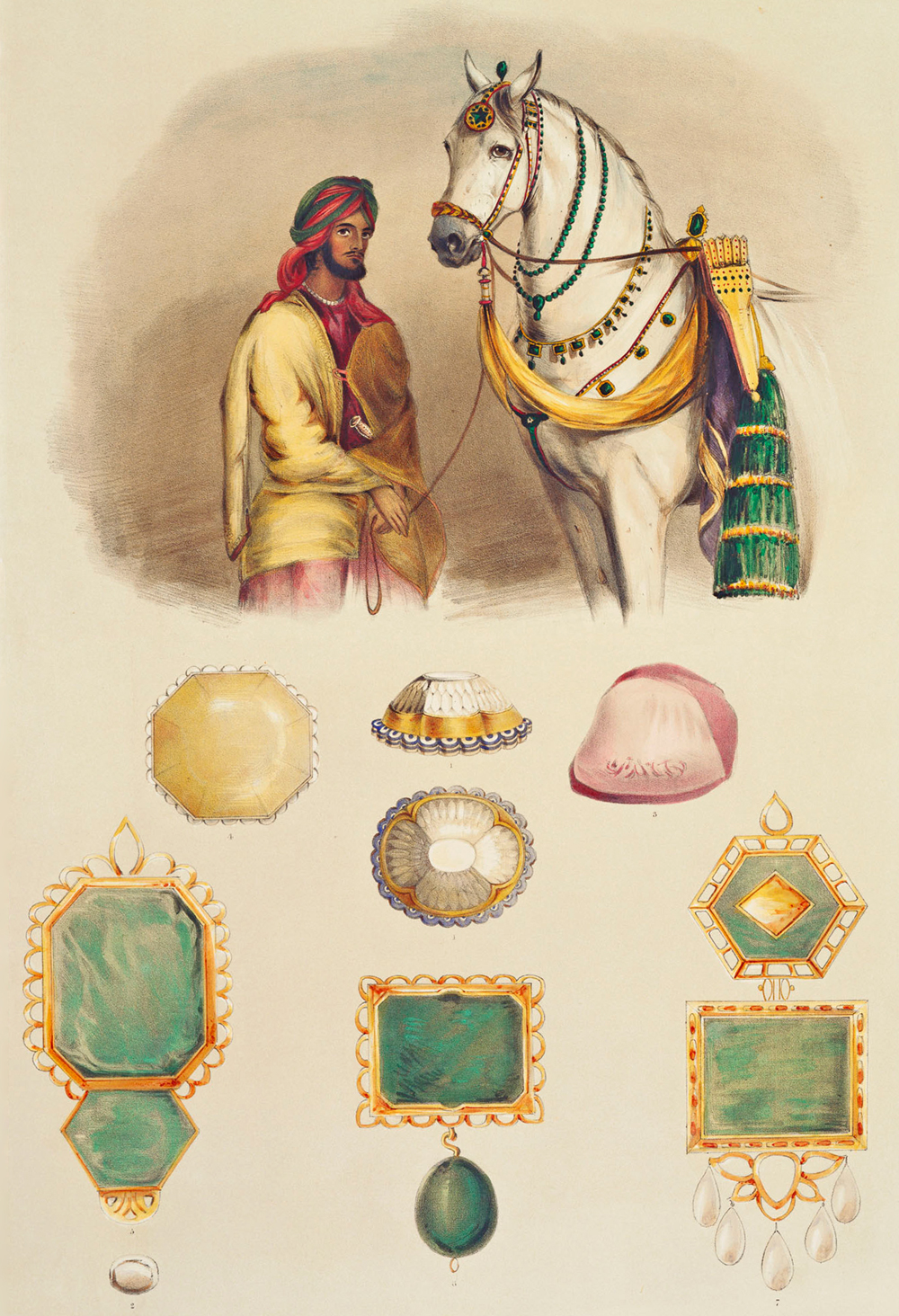
One of Ranjit Singh's favourite horses with the head of his stables. His jewels are shown, to scale, including the Koh-i-Noor (top centre).

